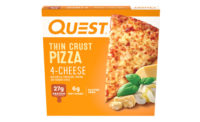Brands that offer a premium experience, deliver wholesome ingredients and support sustainability boast an even greater advantage on the retail shelf or beverage cooler, according to research conducted by PMMI, The Association for Packaging and Processing Technologies, Reston, Va. In fact, studies show consumers exhibit a growing concern and awareness surrounding the quality of products they purchase. And, PMMI’s “2015 Global Packaging Trends Report” outlines how health-conscious individuals place ingredients under the microscope, and that the environmental values reflected through packaging also play a role in the consumer decision-making process.
Functional beverages
Functional beverages containing probiotics such as kombucha or fresh juices are popular healthy premium beverage choices, emerging outside of traditional health stores and infiltrating local markets. To gain a loyal consumer following, clear communication of product benefits is a necessary measure. This means illustrating how packaging technologies preserve the beverage ingredients, like fruit and vegetables, in the purest ways possible.
As a result, innovative technologies that effectively capture functional ingredients are in high demand. In order to maintain value and freshness through processing, cold-pressed and high-pressure processing (HPP) technologies are raising the bar for packaging premium beverages, and come closest to maintaining raw ingredients in their truest form. In fact, it is a preferred method of preservation over chemical additives, for example, which today’s consumers are more likely to avoid. Furthermore, HPP-processed beverages add approximately three weeks to the standard shelf life.
Sustainability options provide win-win
Today, premium beverage choices such as kombucha, juices, teas and coffees can be found in polyethylene terephthalate (PET) glass and plastic bottles. According to PMMI’s report, the use of PET and glass bottles in beverage packaging is expected to rise. Increasingly, product manufacturers are leveraging physical packaging as a key marketing component to demonstrate their conservation efforts.
Likewise, robust glass bottling with amber tints can also extend shelf life by protecting products that would typically be diminished by sunlight or heat. This feature is a bonus for consumers willing to pay for premium packaging since it offers reassurance that healthy beverage contents retain their benefits.
Transparent story telling
Providing space on packaging to amplify an organization’s values invites consumers to be a part of the story, and aligns consumer values with high-quality ingredients, sustainability and production processes such as HPP. According to Oklahoma State University’s Robert M. Kerr Food & Agricultural Products Center (FAPC), Stillwater, Okla., missing this opportunity could be a major oversight. FAPC notes that when consumers are aware of a product’s origin, they are 34% more likely to spend more money.
Discover solutions at PACK EXPO International
Beverage professionals should take steps to innovate and address challenges that come along with these evolving trends. This November, beverage brand owners and other refrigerated and frozen food processors can benefit from a wide range of solutions, networking opportunities and educational sessions at PACK EXPO International, set to take place Nov. 6-9 at Chicago’s McCormick Place.




